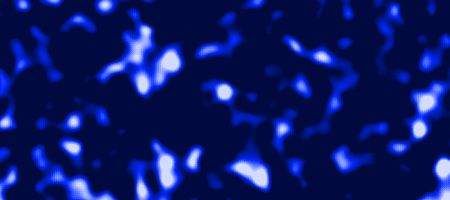Astronomers have produced the most comprehensive map yet of the universe’s dark matter, finding it spread in a spiderweb around which ordinary matter coalesces.

It’s long been surmised that as much as 85 percent of the mass of the universe is so-called ‘dark matter’, as the amount of visible matter in the universe simply isn’t enough to stop the whole thing flying apart.
An international team of researchers analyzed images of about 10 million galaxies in four different regions of the sky, studying how light emitted from these galaxies is distorted as it passes massive clumps of dark matter on its way to Earth.
Their project – known as the Canada-France-Hawaii Telescope Lensing Sury (CFHTLenS) – uses data from the Canada-France-Hawaii Telescope Legacy Survey. This gathered images over five years using the wide field imaging camera MegaCam, a 1 degree by 1 degree field-of-view, 340 Megapixel camera on the CFHT in Hawaii.
The galaxies included in the survey are around six billion light years away. And the results show wispy trails of dark matter connecting large clumps around which galaxy clusters have formed.
“It is fascinating to be able to ‘see’ the dark matter using space-time distortion. It gives us privileged access to this mysterious mass in the universe which cannot be observed otherwise,” says Professor Ludovic Van Waerbeke from the University of British Columbia.
“Knowing how dark matter is distributed is the very first step towards understanding its nature and how it fits within our current knowledge of physics.”
Over the next three years, the team plans to expand the area covered by the survey by more than ten times.
“We hope that by mapping more dark matter than has been studied before, we are a step closer to understanding this material and its relationship with the galaxies in our Universe,” says Dr Catherine Heymans of the University of Edinburgh.






